Pictorial Look at Where We Came From
By Rachael Walkinshaw, the Sara Glasgow Cogan Judaic Studies Intern at the Oregon Jewish Museum and Center for Holocaust Education. All images are from the archives at OJMCHE.
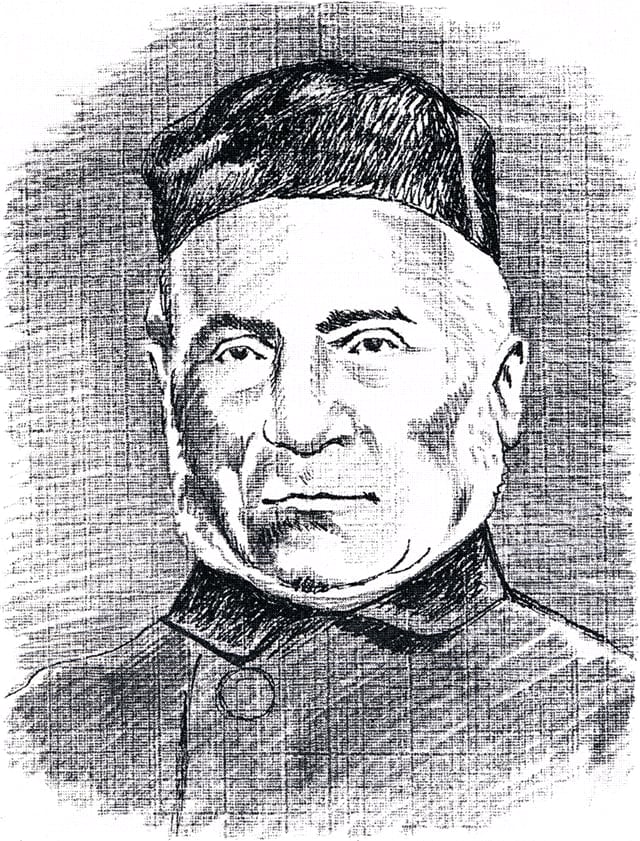
1869
Congregation Neveh Shalom is a merger of two synagogues, Ahavai Sholom, founded in 1869, and Neveh Zedek, founded in 1892. Julius Eckman served as the first rabbi at Ahavai Sholom. Rabbi Eckman had come from San Francisco six years earlier to serve as rabbi to Beth Israel, yet he soon left, finding the Reform movement too far from tradition for his liking. It was this sense of duty to preserve tradition that made him a good fit for Ahavai Sholom, although he was only there for three years. The earliest members were traditionally minded Prussian and Polish immigrants, and for decades Ahavai Sholom was referred to as the “Polisha shul,” despite actually leaning more toward the German style of worship. Searching to balance and blend modern progressive ideas with conservative rituals from varying countries of origin, Ahavai Sholom was a vibrant, if sometimes tumultuous enterprise, where modern Jewish immigrants could find their place in America.
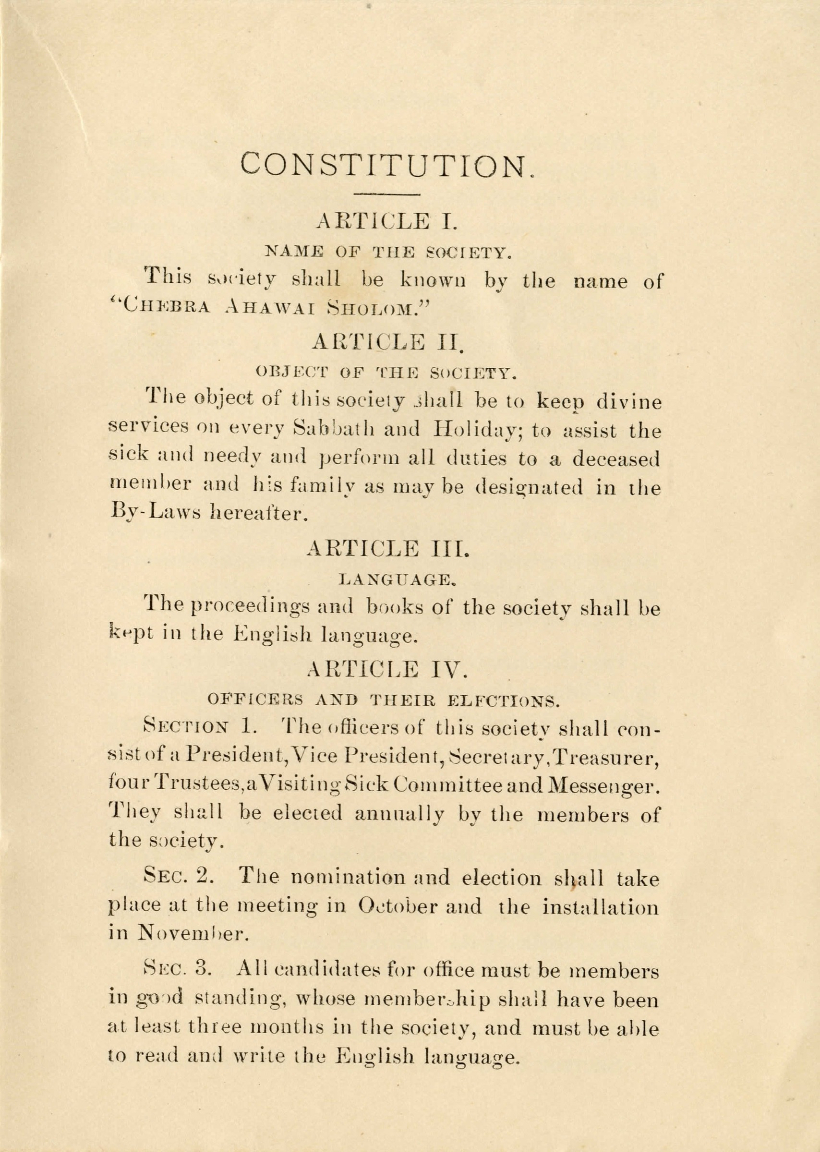
1889
By the time of its first-known constitution in 1889, Ahavai Sholom had built a synagogue on SW Sixth between Oak and Pine, established a cemetery, and survived the ups and downs of its first two decades with a growing congregation, yet without consistent religious leadership. The constitution reflects a step toward modernization, specifying that official business should be conducted in English, although services and lectures were also held in German—not Yiddish. Notably, the constitution makes no mention of a rabbi in its objectives, maybe because finding a rabbi who could steady the growing pains in these early years proved difficult. Fortunately, chazzan Robert Abrahamson, who settled at Ahavai Sholom in 1886, was able to play various roles for most of four decades, performing the duties of cantor and rabbi as needed, lending much-needed stability to the still-maturing congregation.
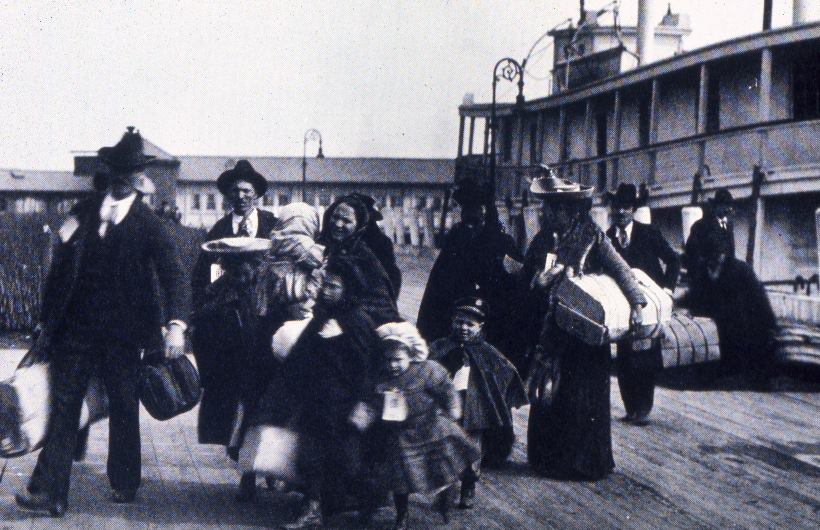
1902
The earliest wave of Jewish immigration to Oregon consisted of Central European single men driven by economic circumstances. In contrast, the Russian immigrants who arrived around the turn of the twentieth century landed in Portland after fleeing violent persecution. They were mostly families, determined to preserve tradition. Congregations Neveh Zedek and Talmud Torah, who would merge in 1902, were both founded by Russian immigrants who sought the same balance as their Ahavai Sholom neighbors—to safeguard and carry forward tradition, while still embracing modernity in liberal worship and rituals. Even at the shul founded by Russian immigrants, services were conducted in English and German, often featuring an orderly choir (the antithesis of the noisy, chaotic scene which characterized traditional Eastern European services), and regular Sunday services were advertised.
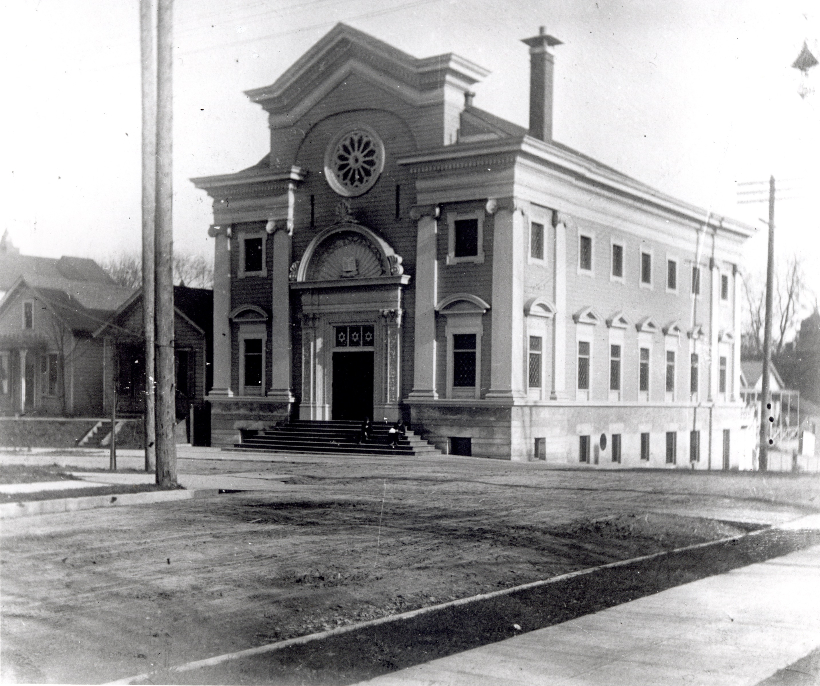
1904
By the end of the nineteenth century, Ahavai Sholom had outgrown its building, and in 1904 a new synagogue was erected at SW Park and Clay. This building would be home for the next nearly 50 years, witnessing many changes and significant growth of the congregation, including Ahavai Sholom’s formally joining the Conservative movement in 1921, an arson fire in 1923, after which the synagogue was rebuilt on the same site, and a wave of German refugees in the 1940s, bringing with them a desire for tradition. Once again the newest members helped to bring balance between tradition and progress.
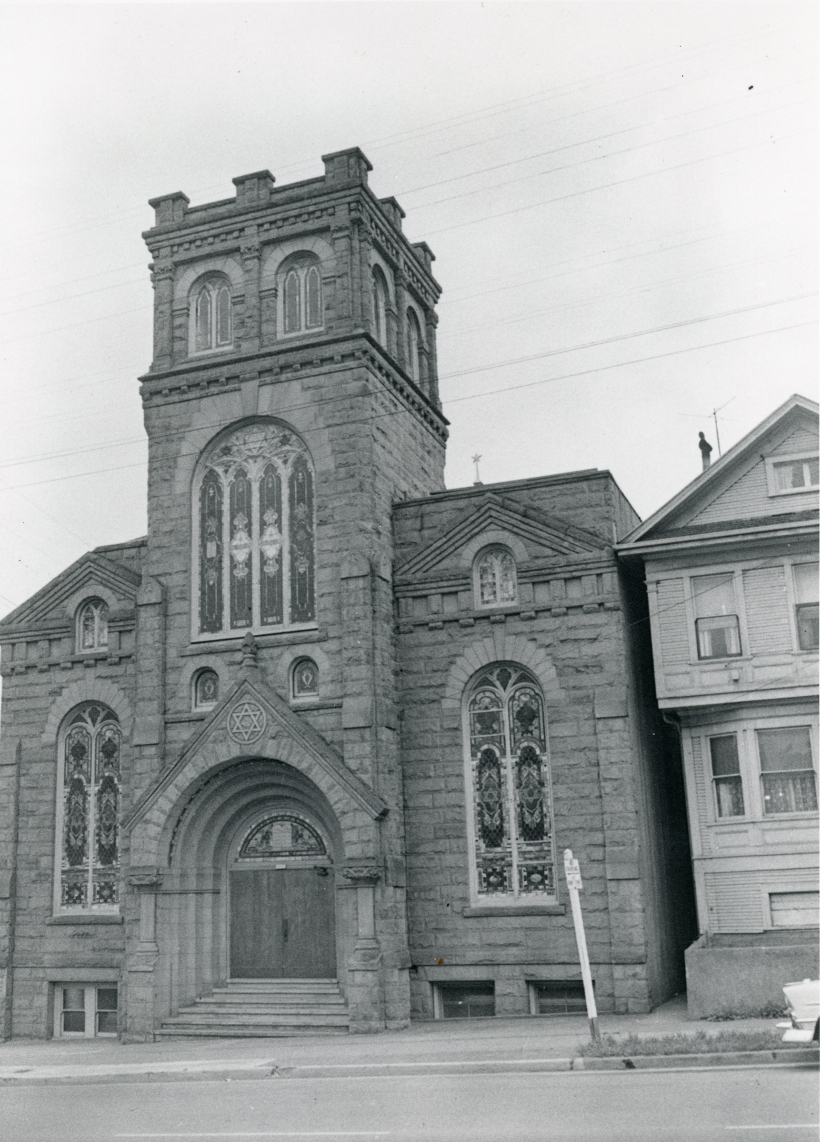
1911
After the merger between the two Conservative Russian congregations, Neveh Zedek Talmud Torah (usually referred to as simply Neveh Zedek) was also in need of a new building large enough to house its growing membership and educational goals. When the cornerstone was laid for a new synagogue in 1911, the congregation boasted 121 families and 144 students at the Sabbath school, in clear need of the home which would serve them for the next five decades.
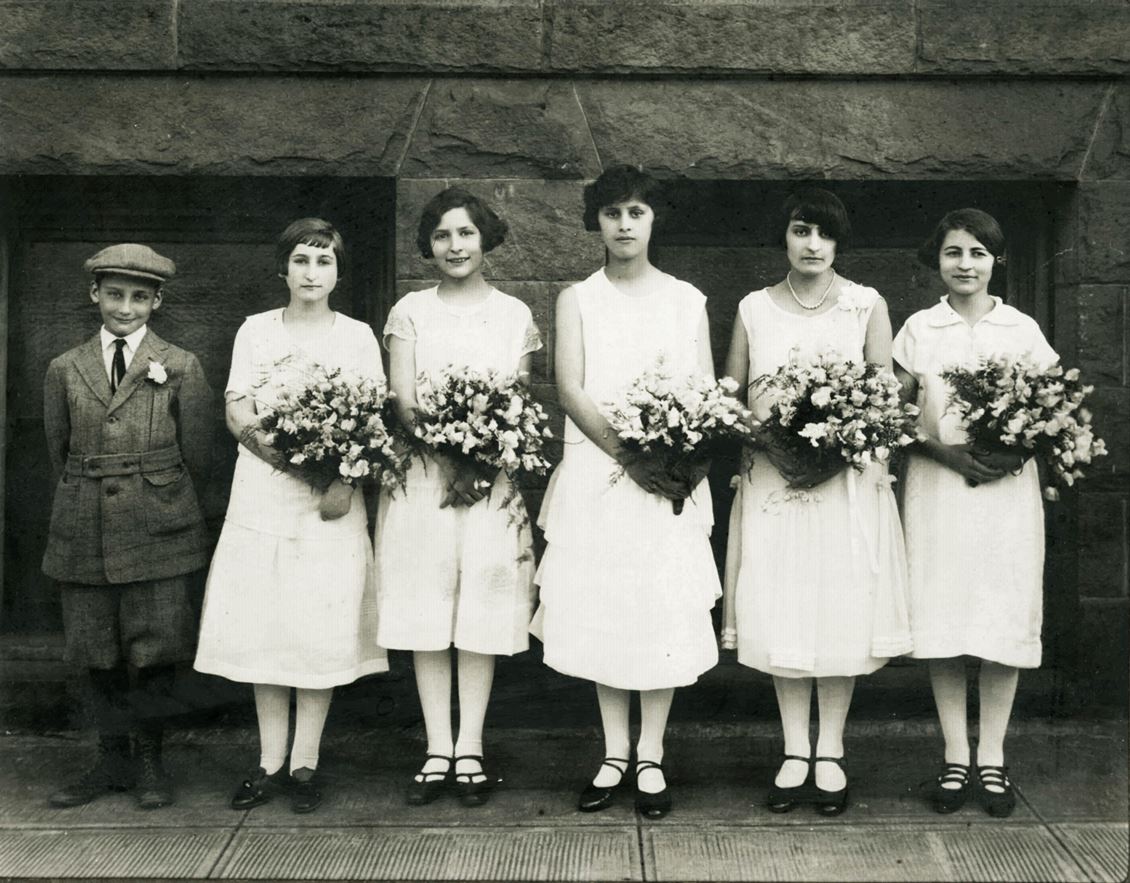
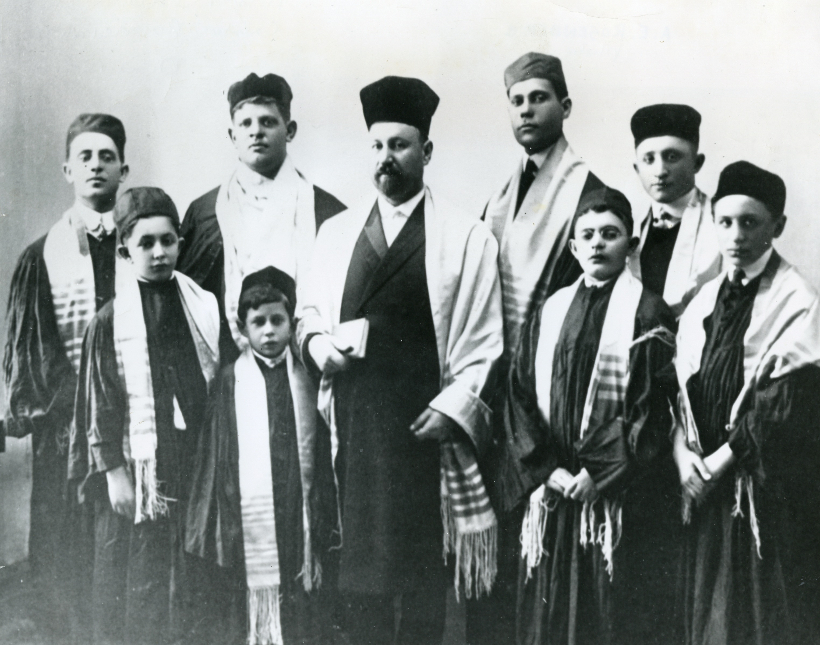
1920s-1930s
Neveh Zedek, like Ahavai Sholom, struggled to find a steady rabbi, leaning heavily on their cantor, Abraham Rosencrantz, who acted as the interim rabbi, led services, and directed education. In this lovely photo of Cantor Rosencrantz with the boys’ choir he directed, the bridge he formed between many parts of synagogue life is evident. Rosencrantz served Neveh Zedek until his death in 1936 and is today remembered for his wonderful voice as cantor.
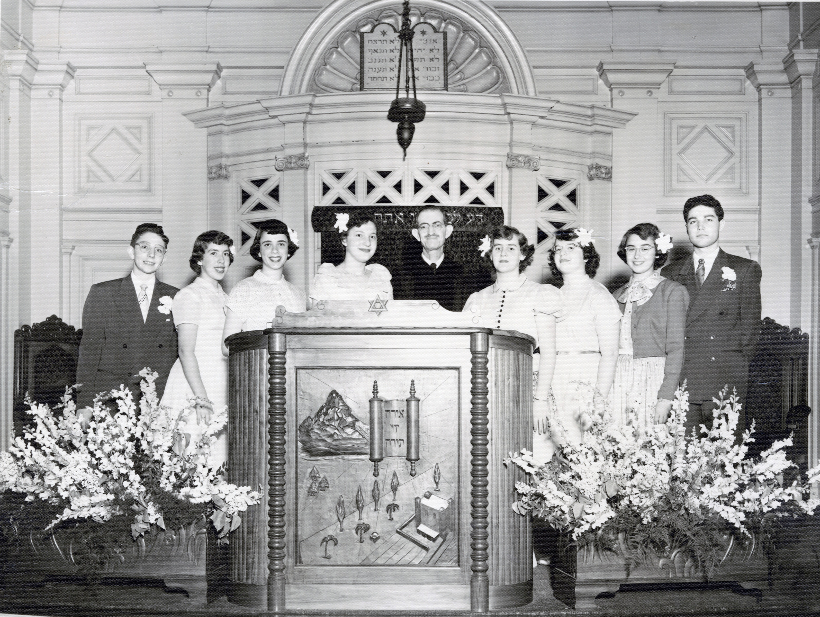
1937
In 1937, Ahavai Sholom welcomed Rabbi Charles Sydney, bringing his steady, calm leadership to guide the congregation for the next 14 years—much longer than any previous rabbi. While the Jewish community reeled from the impact of the Second World War, the influx of German refugees and survivors of the Holocaust into the congregation shifted the tone of services toward the more traditional. Rabbi Sydney kept the congregation on an even keel, weathering the changes in stride.
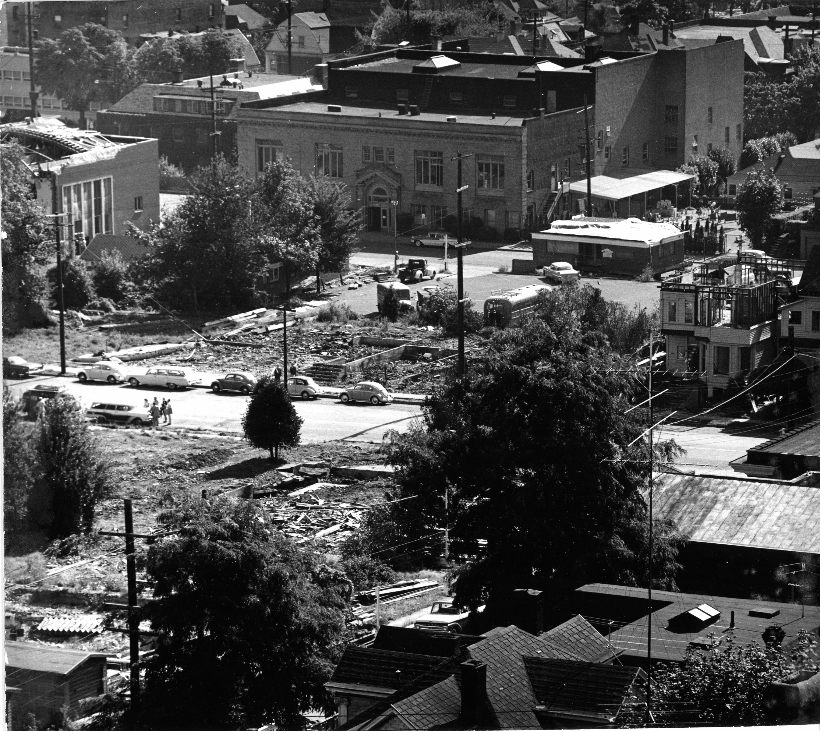
1950
By 1950, membership at Ahavai Sholom had grown to 350 families, prompting the building of a new synagogue at SW 13th and Market. Yet fewer than ten years later, the City of Portland would undertake its South Portland urban renewal project, razing most of what had long been considered the heart of the Jewish community, despite the reality that Jews had moved all throughout the city in the preceding decades. This photo shows the demolition in progress, with Ahavai Sholom’s still-new building on the left and the JCC in the center. Rabbi Joshua Stampfer arrived in Portland in 1953, just in time to guide Ahavai Sholom steadfastly through these turbulent changes.
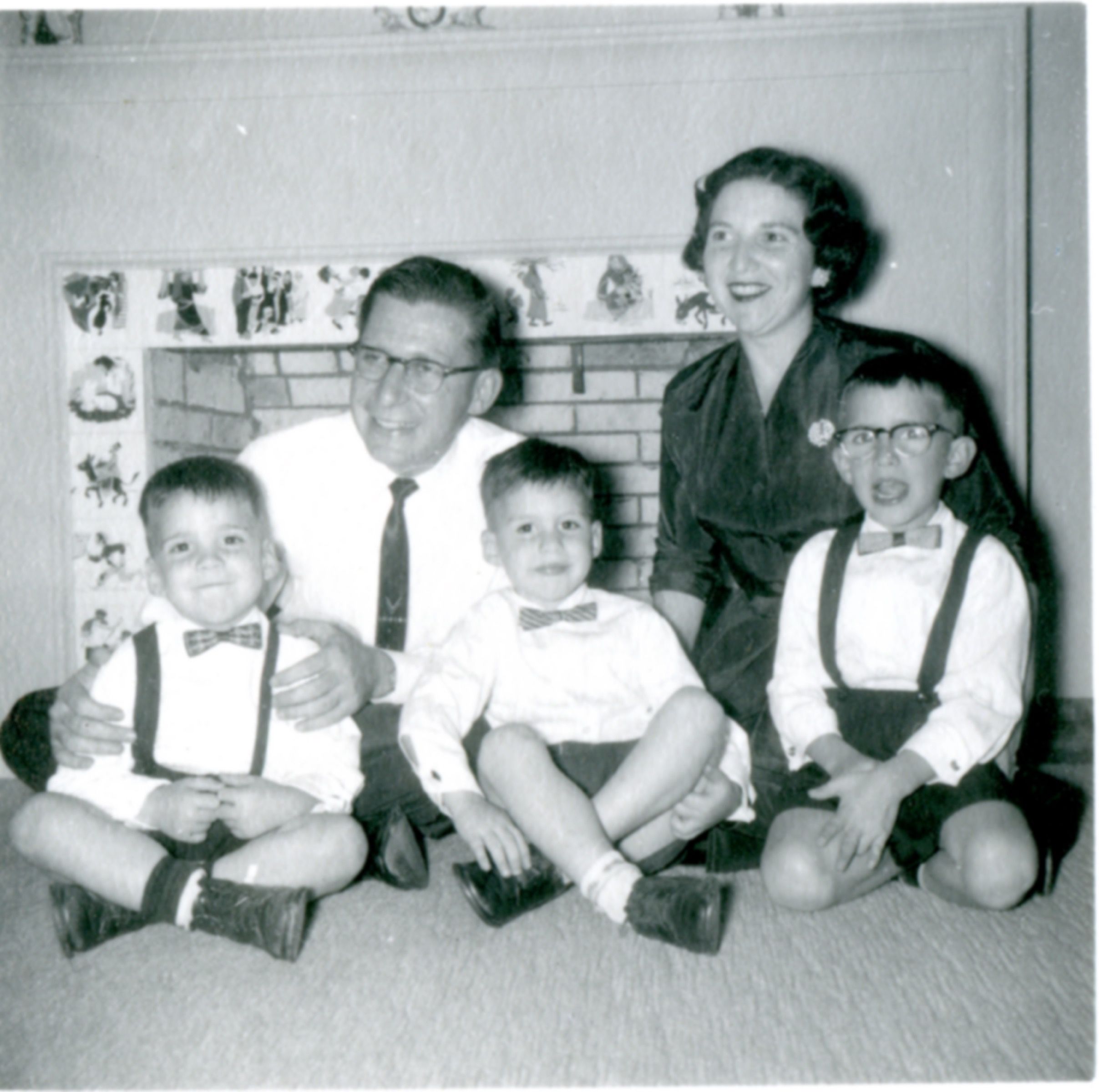
1953
Rabbi Joshua Stampfer arrived in Portland with his young family to assume the pulpit at Ahavai Sholom in 1953. With seemingly endless enthusiasm, Rabbi Stampfer has worked for more than 65 years within Neveh Shalom and in the greater Portland Jewish community to share his passion for Judaism and Jewish education with learners of all ages. He has created numerous programs and institutions, including Camp Solomon Schechter, the Institute for Judaic Studies, and Jewish Historical Society of Oregon. In the 1980s he founded the Oregon Holocaust Resource Center and the Oregon Jewish Museum, which would later merge to become the Oregon Jewish Museum and Center for Holocaust Education.

Mid-1950s
One of Rabbi Stampfer’s first tasks was to expand Jewish education to include Ahavai Sholom’s youngest members, creating a preschool program which would later become the Foundation School. With limited religious school options, many parents from smaller congregations sent their children to Ahavai Sholom for Jewish education. Neveh Zedek struggled to attract young families due partly to the lack of space in their building. An article in a 1957 Neveh Zedek synagogue bulletin encouraged members to enroll their children in religious school, urging parents to “let them sink their spiritual roots deeply down in the rich soil of their religious heritage.”
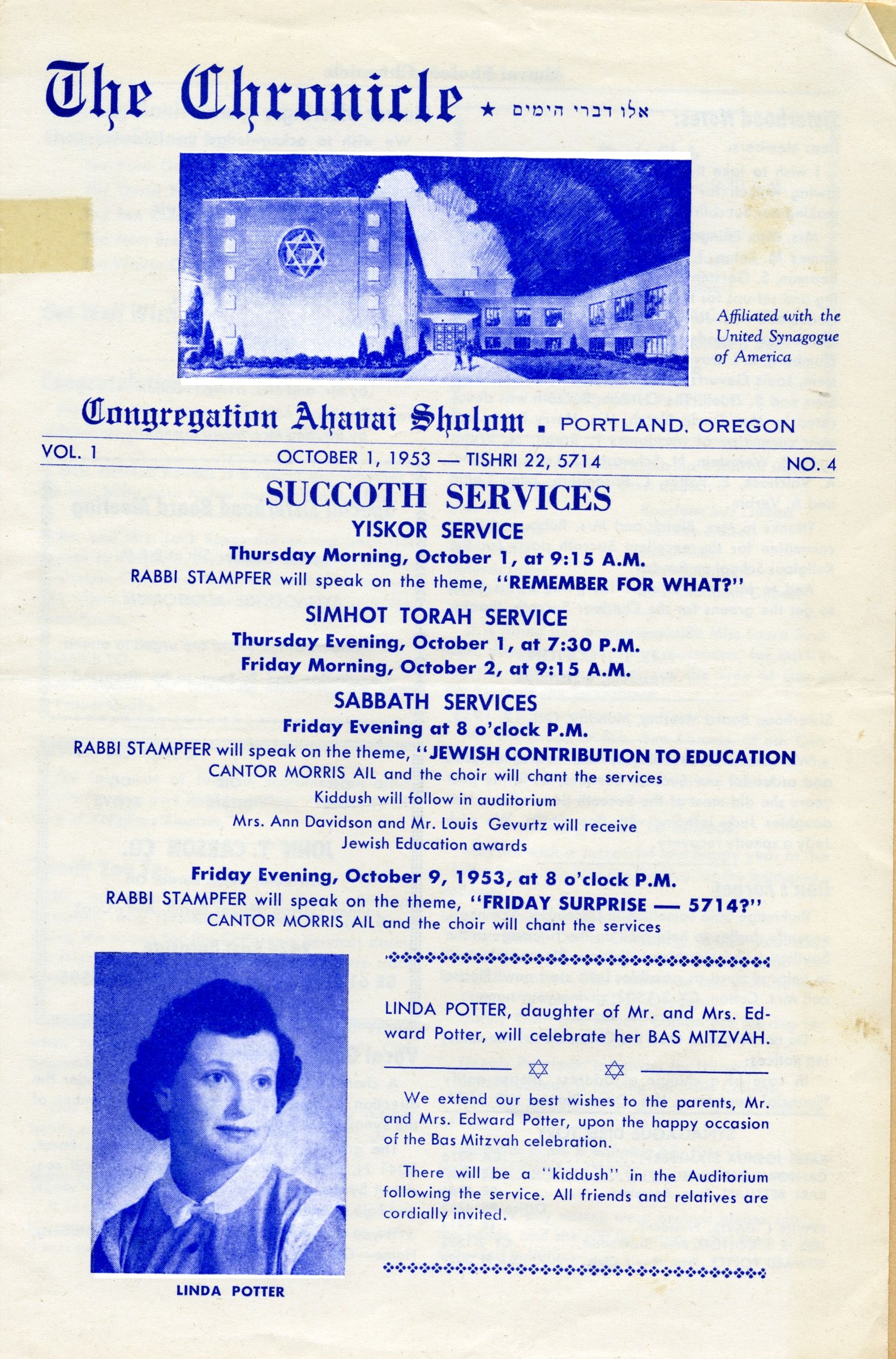
Mid-1950s
The participation of women in religious rituals at Ahavai Sholom appears to have started in the early 1950s. (In the OJMCHE archives we found a Neveh Zedek bulletin from 1937 asking for parents of prospective bar or bat mitzvah youth to contact the rabbi for planning, but we have no clear evidence that any bat mitzvahs actually took place.) Including women in religious practice was part of the progressive values that Portland’s two Conservative congregations embraced. Linda Potter, Ahavai Sholom’s first bat mitzvah in 1953, received strong encouragement and support from Rabbi Stampfer.
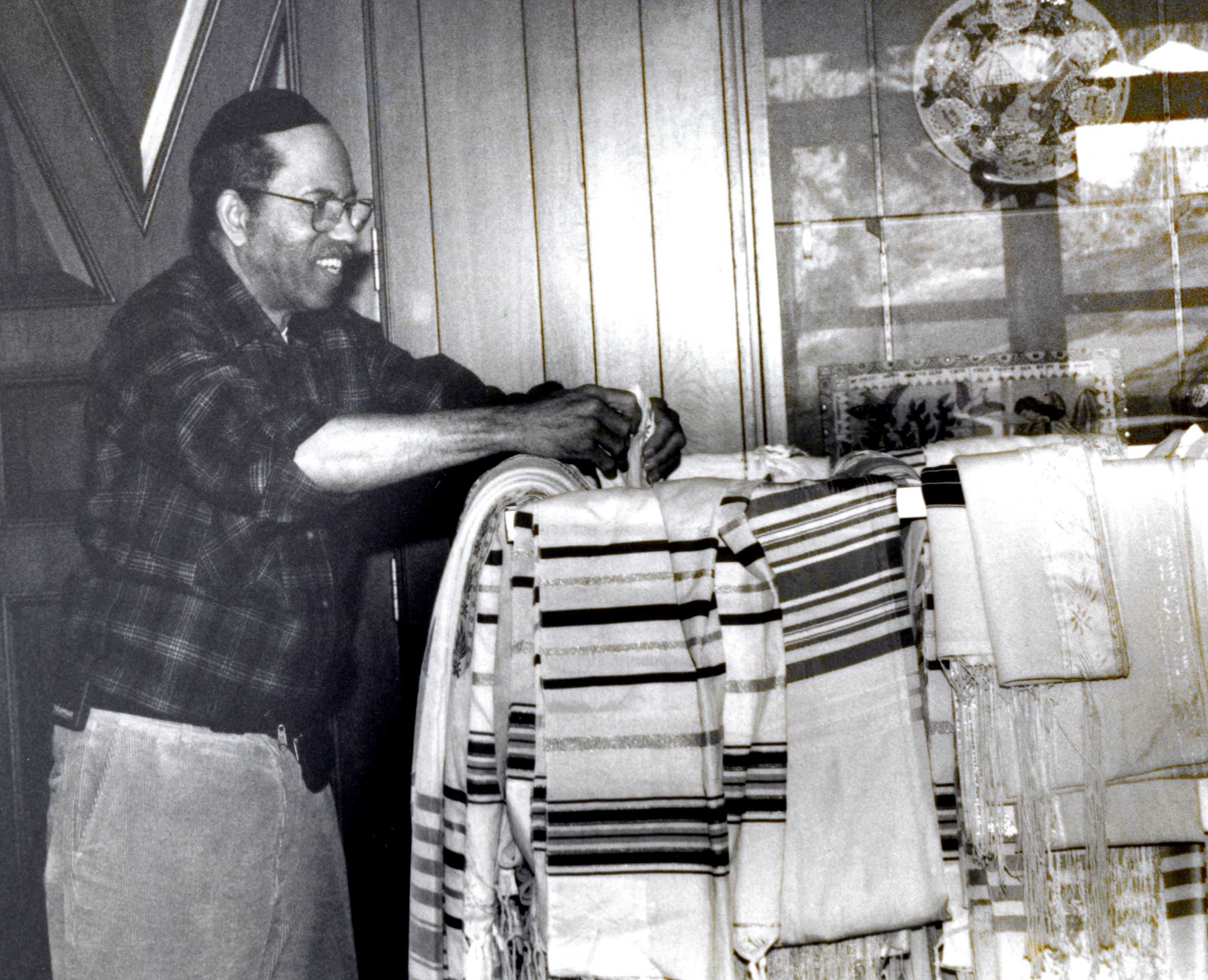
Mid-1950s
The history of Neveh Shalom would not be complete without mention of Major Pruitt. He came to Ahavai Sholom in 1954 as the caretaker, and though he was not Jewish, he spent his lifetime learning everything he could about Jewish practice and law to lovingly fulfill a wide range of duties – organizing weddings, bar and bat mitzvahs and other events, dutifully keeping track of yahrzeits, and supervising the synagogue’s kosher kitchen. A beloved and devoted part of congregational life for more than 40 years, Major’s stature and presence affected congregants of all ages. Once, the five-year old daughter of Judy Margles, director of OJMCHE, told her mother she had a dream about God. When pressed to describe what God looked like, she answered wistfully, “Major.”
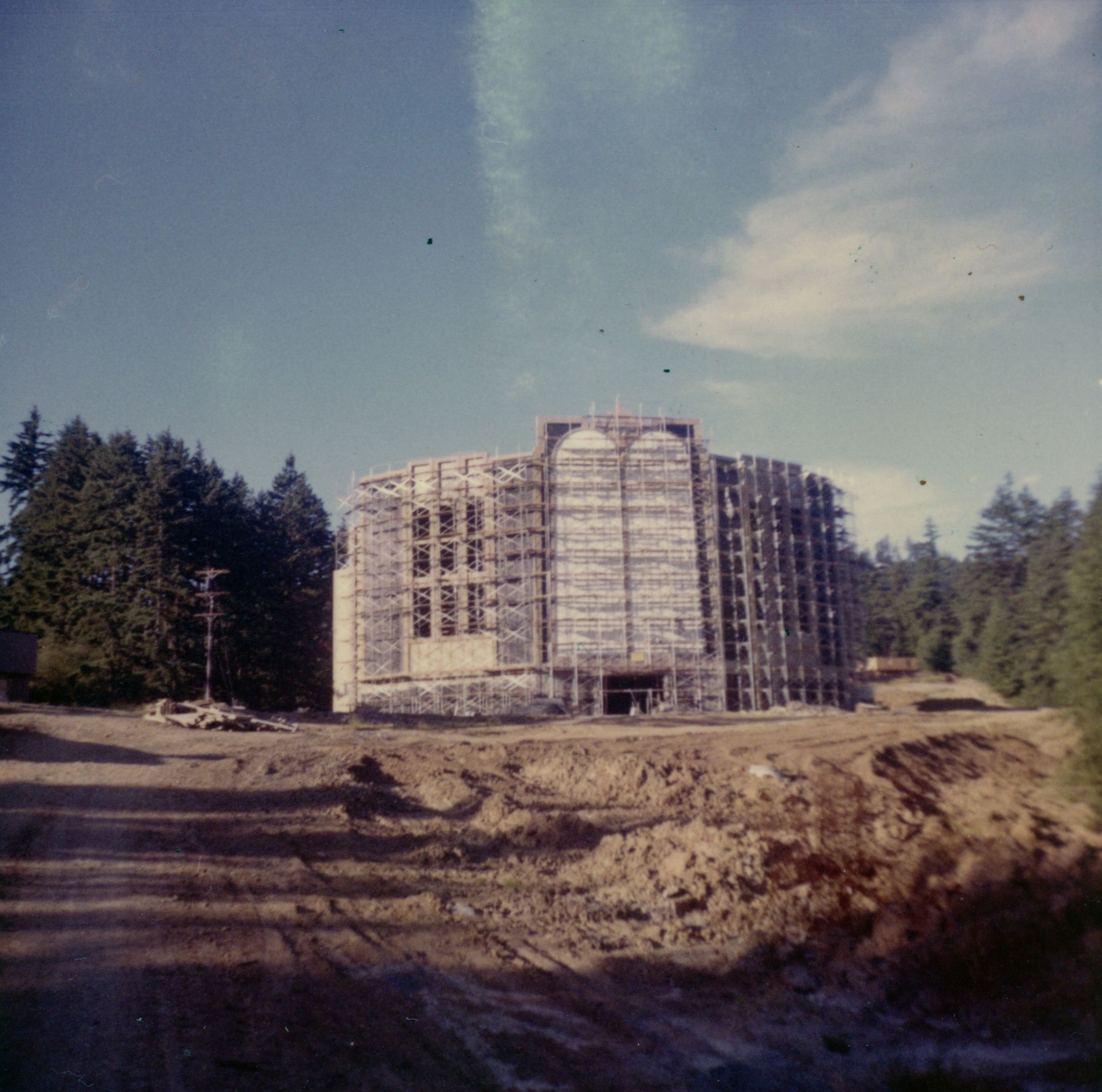
1961
In 1961 Neveh Zedek and Ahavai Sholom voted to merge, despite each congregation’s fears about losing their autonomy and unique character. This decision was not an easy one, nor was the debate about where to locate their new, larger home. These issues had been unsuccessfully raised in the past – twice before the two congregations had considered merging (in 1895 the two did merge but after one year decided to separate again, perhaps due to differences in worship styles), and both congregations had considered moving to the east side at different times before ultimately staying in southwest Portland. After the merger, SW Peaceful Lane became the agreed-upon location on because of its large space, affordability, and proximity to the Robison Home and a growing Jewish community in that area. The dedication of the synagogue and school took place in March 6, 1965, nearly one hundred years after its history began, ushering in an era of stability after the tumultuous previous decade for Neveh Shalom.The Ten Commandments serving as a beacon for Jewish unity in Portland.
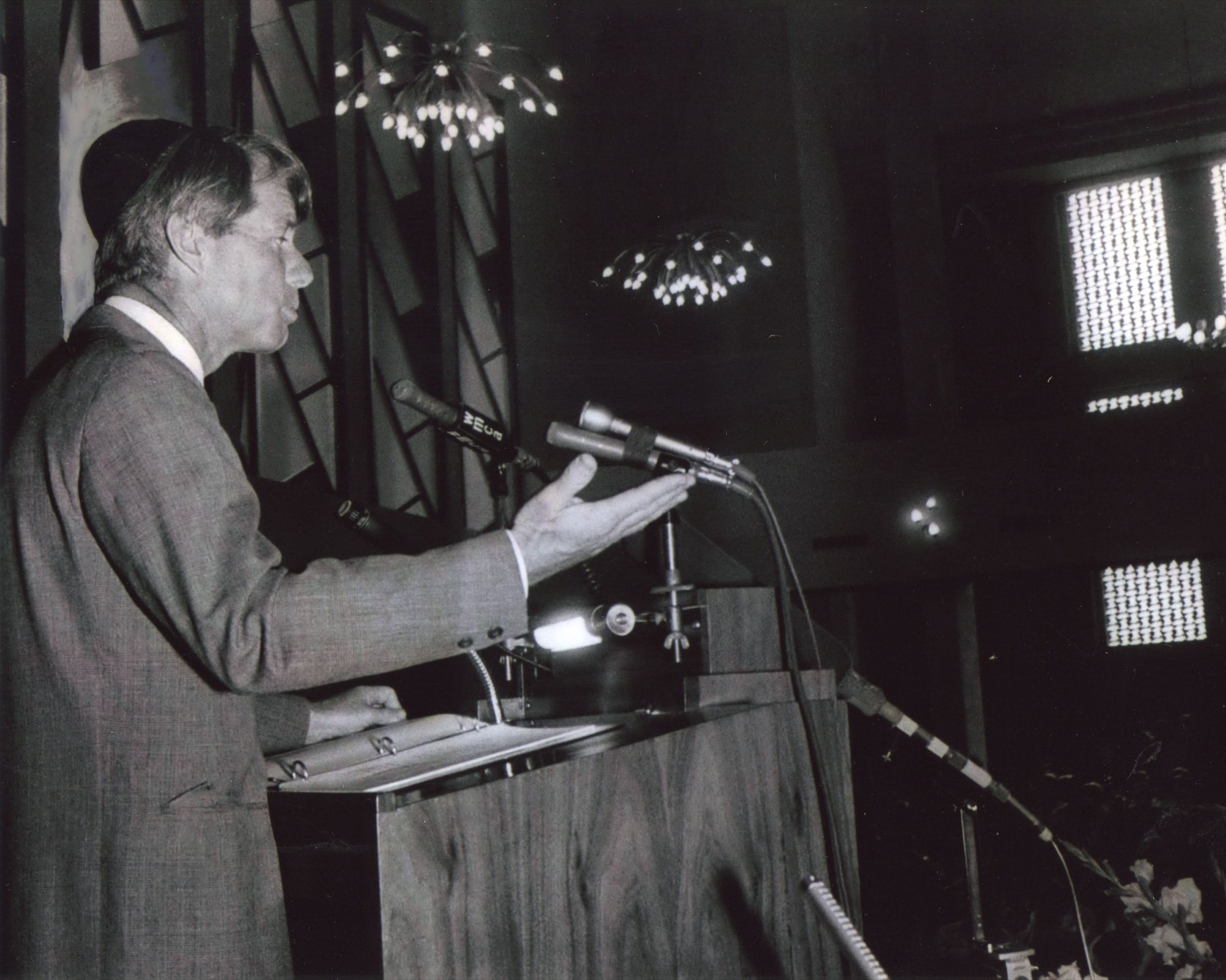
Mid-Late 1960s
In its new home the religious school grew to an unprecedented size, with 542 children enrolled in 1965. Education for all ages expanded, with adult classes on traditional and modern subjects, exploring civil and social issues from a Jewish perspective. Rabbi Stampfer led book discussions, and the congregation hosted notable speakers including Robert F. Kennedy, Chaim Potok, and Abraham Joshua Heschel. They addressed a wide range of topics covering civil rights, Israel, local politics, and Jewish theology.
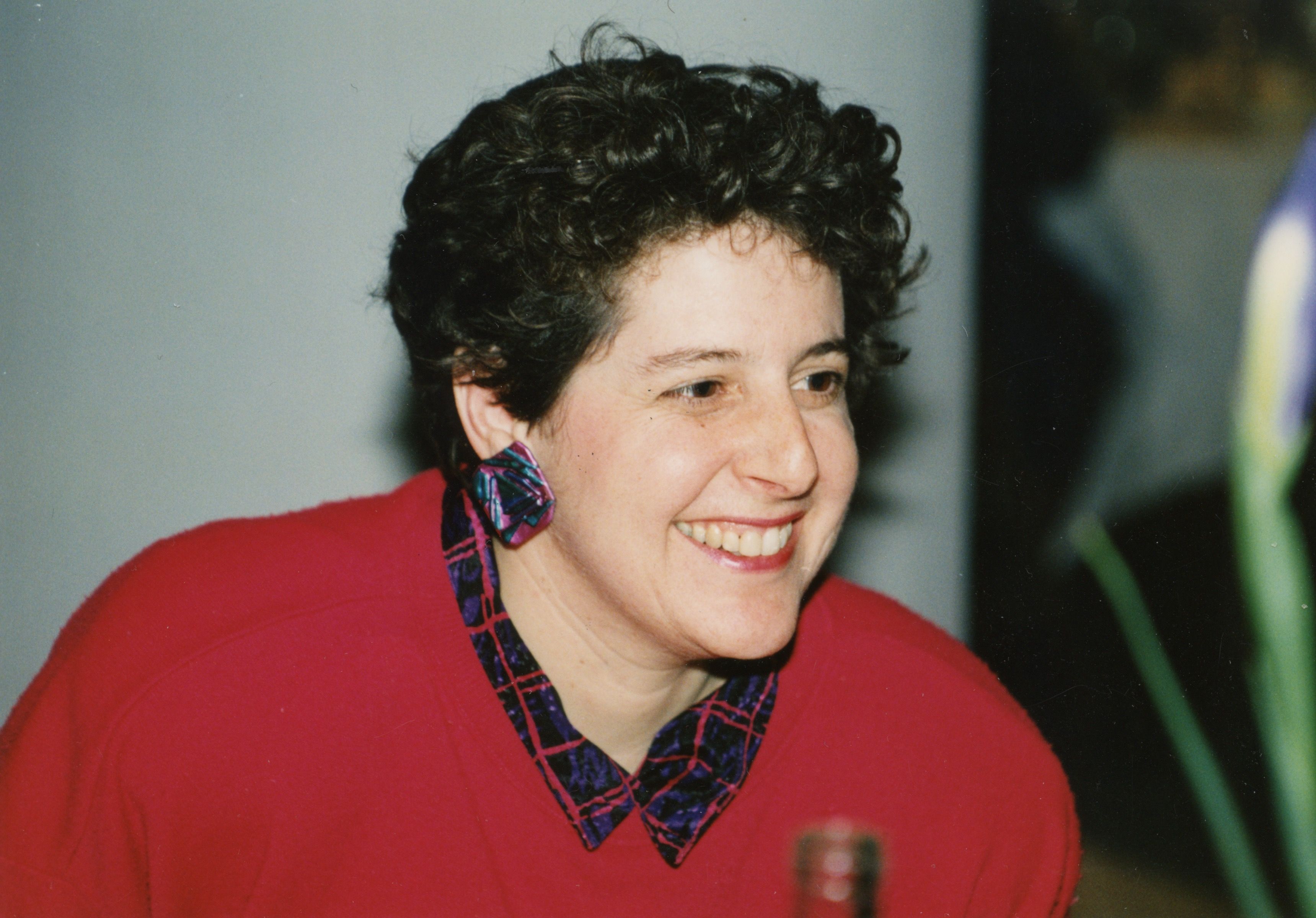
1970s
Women began taking on more leadership roles in the congregation, stepping beyond the Sisterhood’s traditional role in fundraising and education to assume positions of both spiritual and lay leadership. In 1967 Min Zidell became the first woman to serve on the board, and in 1976 Carolyn Weinstein became the first female executive director. Also in 1976, as Neveh Shalom officially affirmed the equality of females within the congregation, women began to wear tallit and tefillin, to read from the Torah, and participate in other religious rituals. In 1978 the congregation elected Elaine Cogan to be its first female president, one of the first women nationally to hold this position before her husband. When in 1978 Cantor Linda Shivers came to Neveh Shalom, she also became the congregation’s first, and one of the nation’s first, female spiritual leaders.
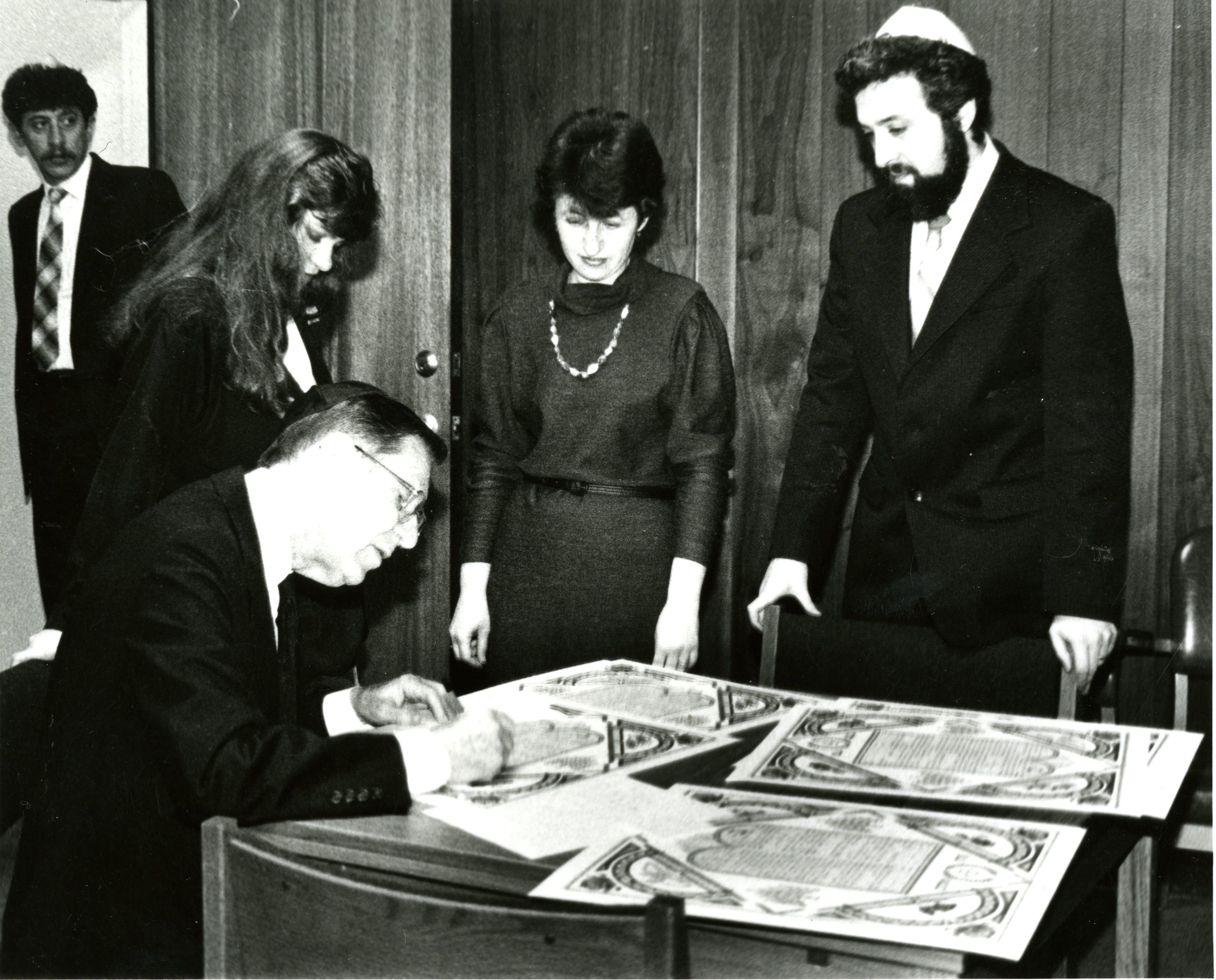
1980s
As Jews across the country turned their attention to the persecution of Soviet Jewry, so too did Neveh Shalom. Rabbi and Goldie Stampfer traveled to the Soviet Union to smuggle Jewish objects and books to Jews there, and their son, Shaul, organized a protest in Portland. The congregation held lectures to educate members on Soviet policies toward Jews, fundraisers to help with their resettlement in Portland, and established a cultural club to help the new wave of Jewish immigrants adjust to life in America, just as Portland’s congregations had in generations before.
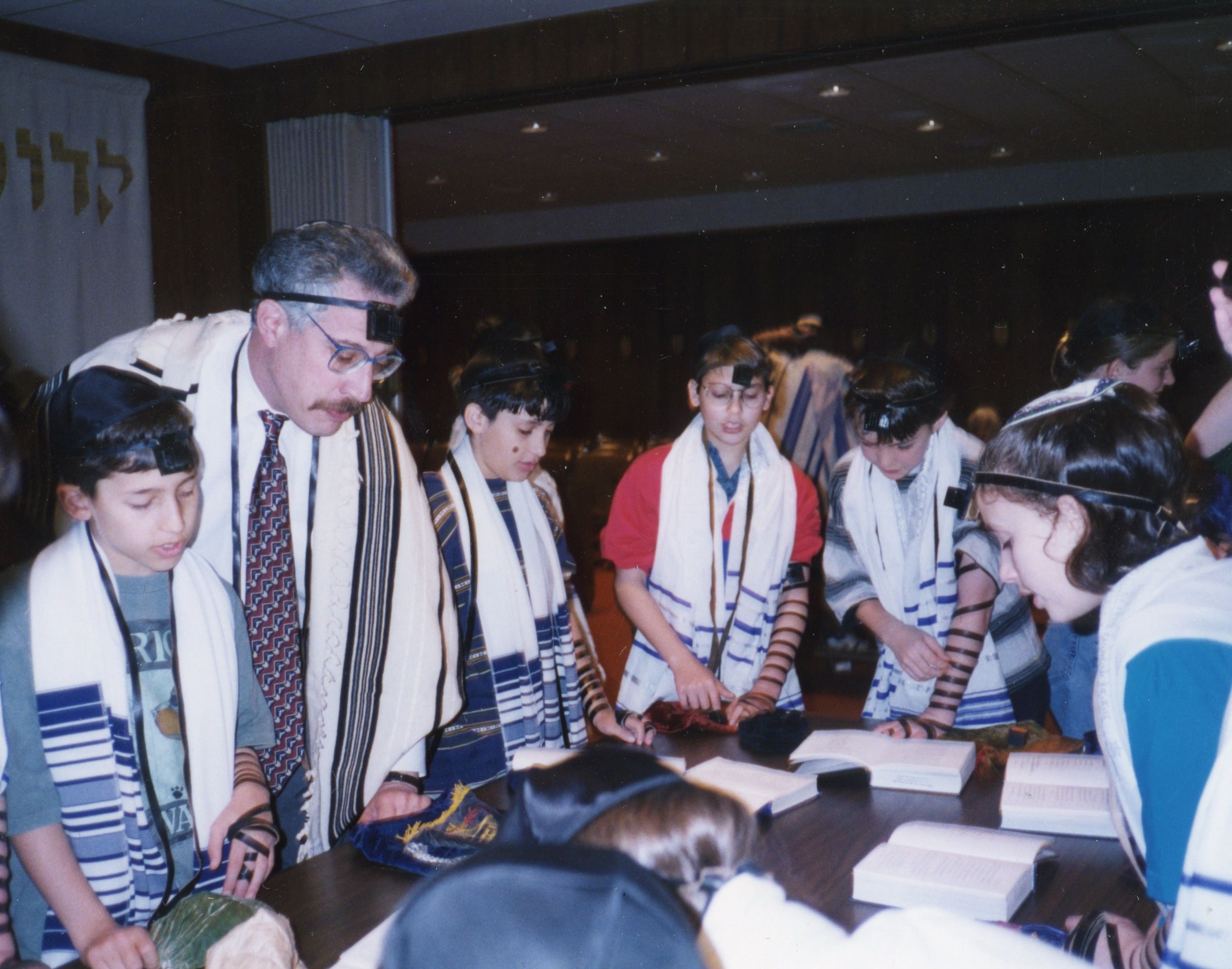
1990s
In 1993, after serving Neveh Shalom and Portland’s Jewish community for 40 years, Rabbi Stampfer retired, becoming the congregation’s first Rabbi Emeritus and continuing to this day to teach and participate in congregational life. He was succeeded by Rabbi Daniel Isaak, who served as Senior Rabbi from 1993 until 2015. Like his predecessor, Rabbi Isaak led the congregation in thoughtful dialogues through a Jewish lens about modern issues which included LGBTQ rights, Muslim-Jewish relations, and environmental responsibility.
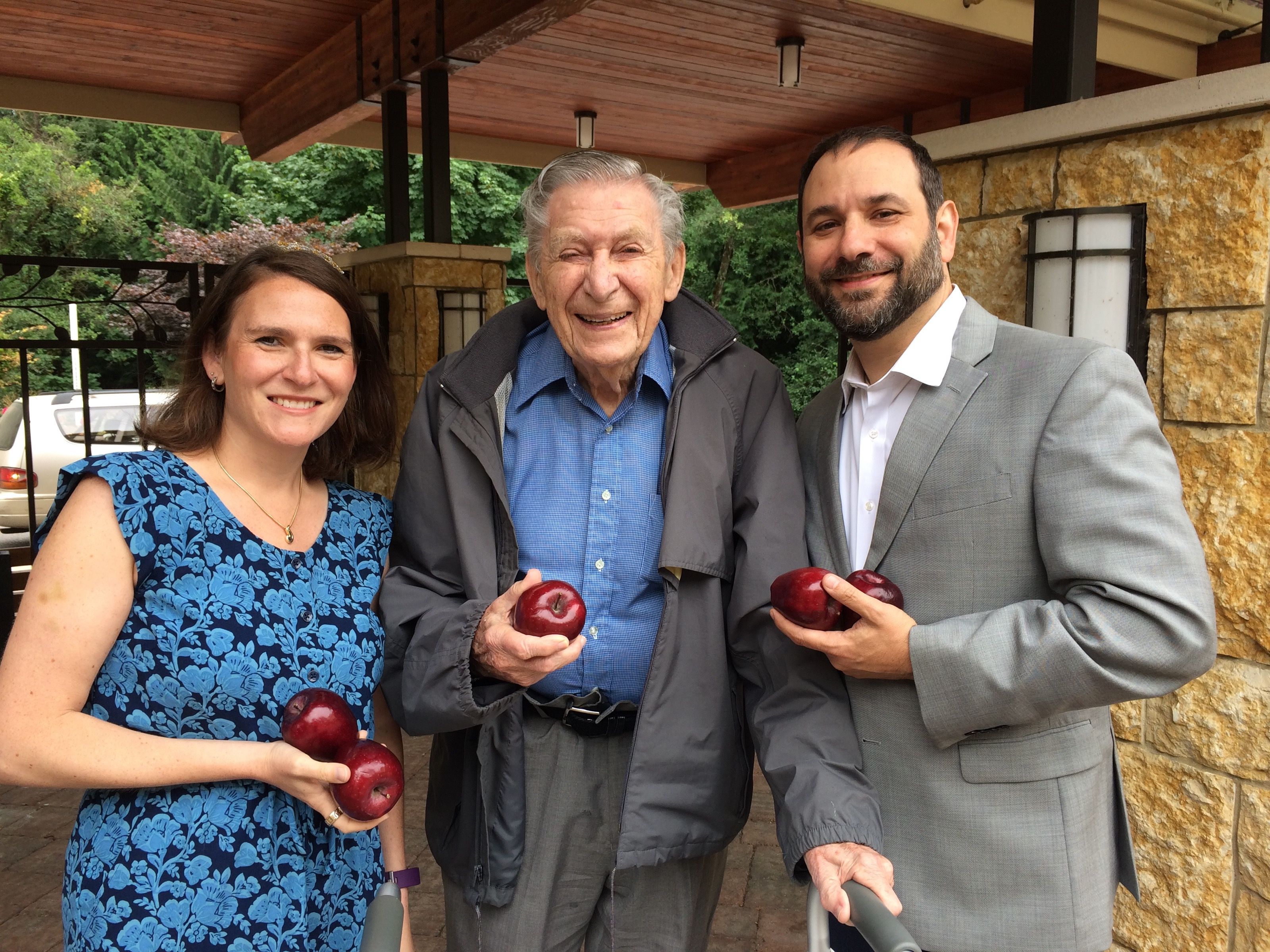
Present
Today Neveh Shalom is maintaining its long tradition of balancing Jewish customs and rituals with progressive values, and continuing in its commitment to bring Jewish values into the concerns of the modern world. With a rich diversity of educational opportunities for all ages, the congregation is more open than ever before to new conversations about how to carry Jewish tradition progressively forward into the future.
We would like to thank all of the staff at OJMCHE, particularly Judy Margles, Anne LeVant Prahl, and especially Rachael Walkinshaw, for their extensive work putting together this pictorial essay of our very beginning 150 years ago, through the merging of Ahavai Sholom and Neveh Zedek, and the dedication of our present location.
At the time of this writing, Rachael Walkinshaw was a Judaic Studies minor at Portland State University and the Sara Glasgow Cogan Judaic Studies Intern at the OJMCHE. Her great-grandparents were members of Ahavai Sholom, and she has been involved with Jewish education for more than ten years, teaching at Shir Tikvah’s Nashira Project.



